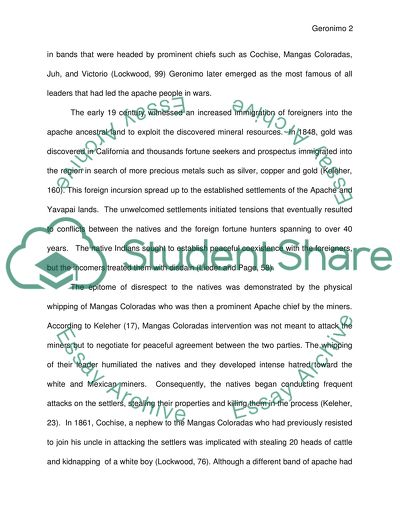Cite this document
(“Geronimo: Life and Leadership in War Resistance Research Paper”, n.d.)
Retrieved from https://studentshare.org/history/1435921-geronimo-his-life-and-his-leadership-in-the-apache
Retrieved from https://studentshare.org/history/1435921-geronimo-his-life-and-his-leadership-in-the-apache
(Geronimo: Life and Leadership in War Resistance Research Paper)
https://studentshare.org/history/1435921-geronimo-his-life-and-his-leadership-in-the-apache.
https://studentshare.org/history/1435921-geronimo-his-life-and-his-leadership-in-the-apache.
“Geronimo: Life and Leadership in War Resistance Research Paper”, n.d. https://studentshare.org/history/1435921-geronimo-his-life-and-his-leadership-in-the-apache.


